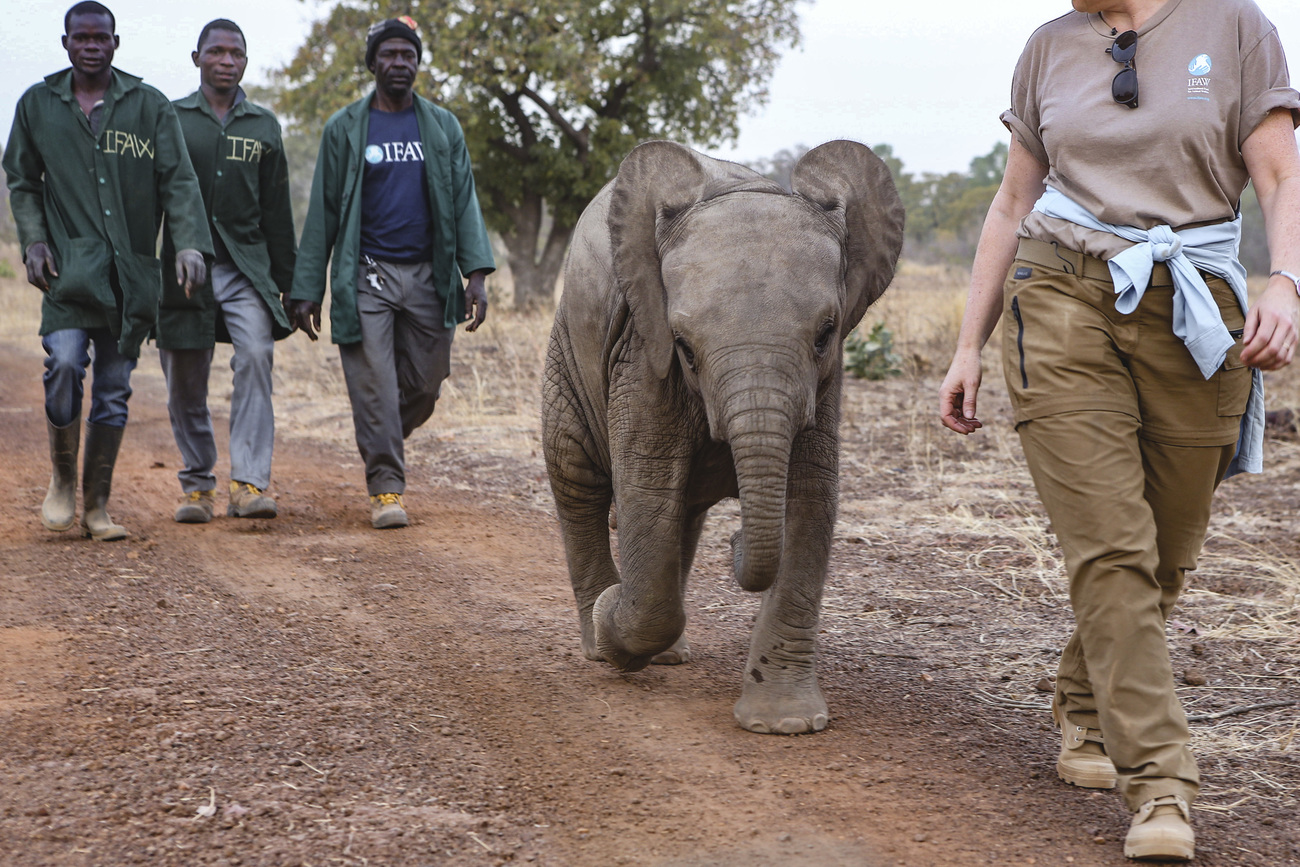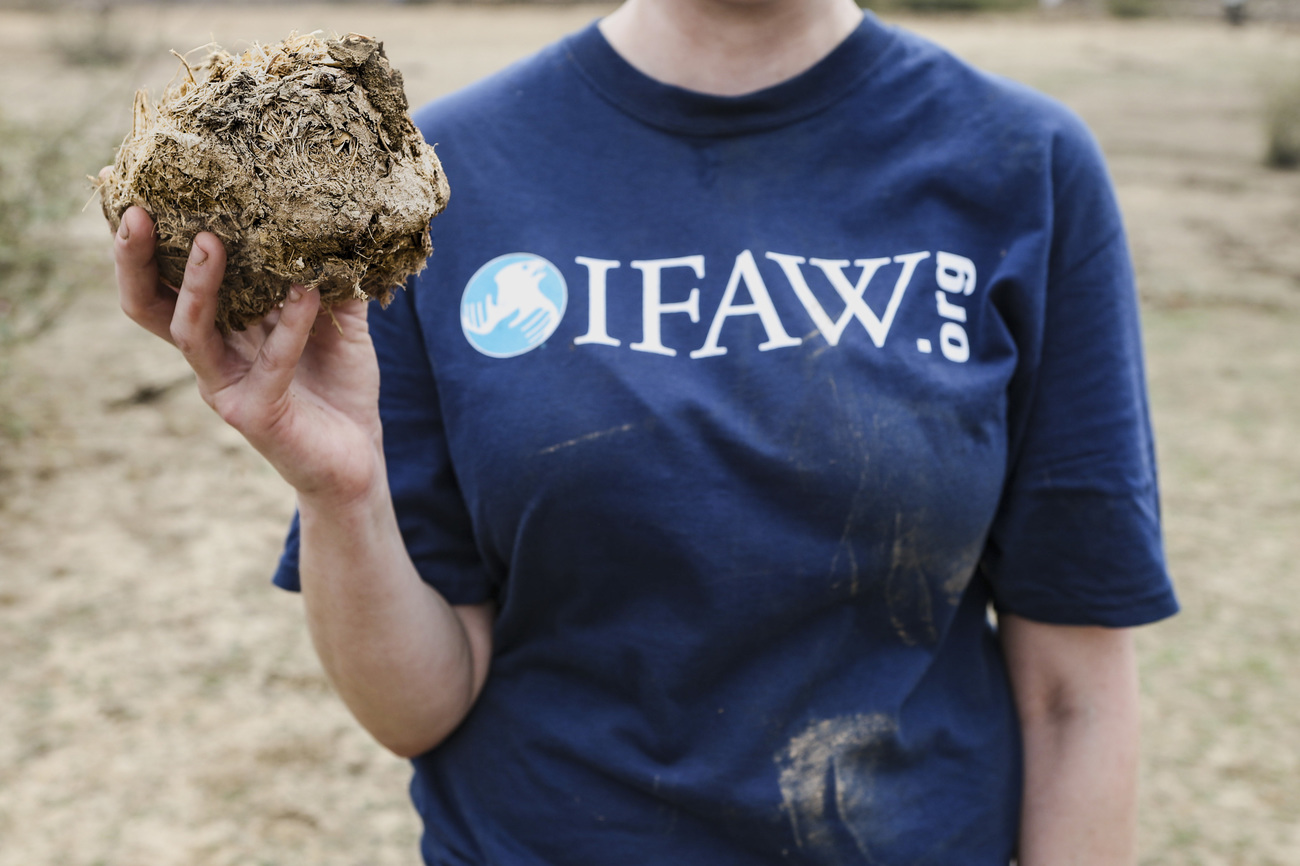Elephant Rescue and Rehabilitation Project - Burkina Faso
Saving one elephant calf can make a big differencethe search for Nania's mother
the search for Nania's mother

I no longer recognize the park. The last time I was here, the ground was dry and cracked. The harmattan – that warm wind blowing from the Sahara – had scorched the grass, giving the savannah at Deux-Balé its characteristic hue, ranging from pale yellow to golden brown.
Today, though, the vegetation is luxuriant and emerald green, as I scan the area for Nania. I spot her standing in the water next to Whisty, her sheep friend, enjoying the tasty tall grass drenched in the torrential rains that recently fell on the park and surrounding region. In deep concentration, Nania ensures she picks her preference: the tender shoots. The soft young grass shoots are easier to digest and highly nutritious: they give her the vitamins, minerals, amino acids and other nutrients she needs to supplement her daily intake of 16 liters of milk. Skillfully, Nania wraps her trunk around the plants, uproots them in one quick pull, lifts them into her mouth and chews with relish. She looks happy.
Every day, Nania’s attitude and behavior are minutely observed to ensure that she is developing in the same way as an elephant in the wild. Thanks to the care provided by her four guardians and Whisty’s reassuring presence, Nania is in good health and gradually becoming more confident and independent. However, we are aware that she needs to be among her own kind, surrounded by her herd and encouraged by her mother, in order to learn how to explore her habitat for food, bathe, cover herself in mud and even play. So, at IFAW, we decided to shoot for the stars and take on an ambitious challenge: to research Nania’s origins and find her family.
How will we do this? With the help of science, by conducting genetic tests of wild elephant dung collected close to places where Nania goes. The dung samples, stored in test tubes, will be sent to a research and analysis center in the United States specializing in conservation biology. The DNA extracted from these samples will be compared to Nania’s, with the hope of identifying a close family relationship. This laborious task will require everyone’s help, but it also represents a beacon of hope for Nania’s future and that of the wild elephants in the park.

The heavy rains over the past few months have erased all traces of the wild animals’ presence. Obeying their migratory instincts, they have temporarily abandoned the area, gracing other regions with their magnificent presence. Water has filled the footprints they had left near the water hole where Nania is bathing – half-sea creature, half-submarine – under Whisty’s wondering gaze. I know that they will be back soon, that it’s a matter of days, but right now, so far from her wild kin, Nania seems to be more of an orphan than ever.
Twenty years ago, more than 100 elephants roamed on the park’s 56,000 hectares of land. Today, only 30 to 40 have survived the poaching, overgrazing and conflicts with neighboring settlements. Nania’s mother may be one of them.
Help us find her!
-Céline Sissler-Bienvenu, France & Francophone Africa Director
Related content
Our work can’t get done without you. Please give what you can to help animals thrive.